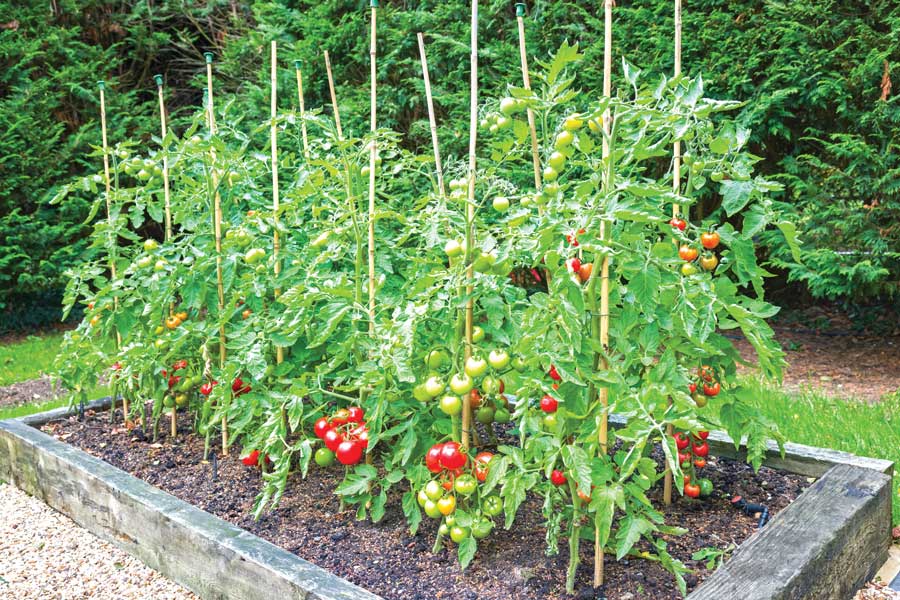The growing season is in full swing, and there seems to be an endless list of jobs that are demanding for your attention.
It’s also planting and sowing time in both the flower and vegetable garden, hundreds of plants are available at garden centres and nurseries and resisting temptation is almost impossible.
A scramble around the garden and through the shed assembles together all the pots and containers discarded at the end of last year, and the challenge begins, what compost should I buy? Will I need to feed them and what colour scheme is in fashion this year? All questions that can send you into a spin. The truth is that whatever mix of plants or colour combinations you choose will be fine, and whilst they may not turn out as expected, they will make you smile. As we move towards ‘peat free’ growing there are lots of new composts on the market so research through gardening magazines and ask at your local allotment society or garden club as to what they recommend and if there are any things to look out for.

I have grown tomatoes for almost sixty years, my first varieties being Ailsa Craig and Alicante, now I grow Shirley, Sungold, Okardo and two or three new introductions each year. If you plan to grow from seed the choice is huge, but the plants available through garden centres and nurseries are much more limited which on the plus side makes the decision of which to buy a little easier.
There are varieties that will grow outside in the garden and those that need the protection of a greenhouse, and then there are those that will produce large fruit, small sweet cherry types, in a range of colours some with stripes and different shapes. However, the most important thing about tomatoes is the taste, sweet, juicy, or with that tang and taste so individual to this amazing fruit.
In the greenhouse I use grow-bags, partly because the floor is paving flags, which makes it easier to clean in autumn. I cut three holes in the top of the bag just big enough to fit a ring pot ( a pot 25cm (10 inches) in diameter with no bottom) gently push the pot into the compost by about 3cm (1.5 inches) then fill with good quality compost. I then insert a bamboo cane into each pot and tie a long horizontal cane to the greenhouse making a firm framework to tie the plants to as they grow.
If you are growing outside you can use the same system of grow-bag and ring pot, or just grow in a large patio container at least 30cm (12 inches) in diameter. There are bush types that don’t require staking and are a little easier to look after. You can also plant into the garden providing your soil is rich and free draining. Use a tomato feed every week after the first flowers have set and make sure the plants don’t dry out.
Plums and cherries do not require extensive pruning and generally it is a case of removing dead, diseased and damaged shoots, and thinning if the tree is becoming a little too congested. The key is timing as there is a disease called ‘Silver Leaf’ that can ultimately kill the tree. Infection is more likely during autumn and winter, which is why we don’t prune plums and cherries until late spring into early summer, (April to July).
Root crops, including carrots, parsnips, turnips and swedes are some of the most versatile vegetables we grow and now is a great time to start sowing. Ideally the soil needs to be well cultivated and free from stones. All of these root crops grow best in soil that was manured for a previous crop, (last year), as too much organic matter will cause the roots to fork and produce thin wispy roots difficult to prepare for the kitchen.
These root crops are all what we call biennials, growing and producing a fleshy root in the first year, by the end of the season they do become a little woody and inedible. In spring they often develop green shoots in an attempt to start their second year. If left or planted in the garden they will producing tall flowering stems, carrots and parsnips have have flowers in umbels, like cow parsley, whilst swede and turnip are related to the cabbage family producing a long rather blowsy flowering stem with creamy to yellow small flowers. They do look quite attractive in a quite naturalistic way.
Happy gardening,
Martin
Next month, (keep an eye on your soft fruit, training climbing roses, layering clematis)







